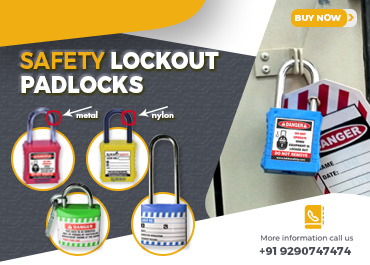- The purpose of a “Lockout/Tagout” procedure is to protect employees from machines and
equipment capable of causing injury due to unexpected energization, release of stored
energy or the start-up of equipment while an employee is performing maintenance or
servicing equipment. To inform Contractors of their responsibility when performing
lockout/tagout activities at NSU to ensure all employees potentially affected by energization
of building systems are properly protected and the EH&S office notified.
1.2 ACTIVITIES
NSU ensures all its employees; faculty, students, visitors and property are protected by
complying with the OSHA Standard, 29 CFR 1910.147 – Control of Hazardous Energy
Sources (Lockout/Tagout).
NSU maintains a Lockout/Tagout program for its maintenance employees, where standard
locks and tags are used to control the start-up of equipment that is being serviced or
maintained by employees.
Controlling hazardous energy may involve disconnecting motors, de-energizing electrical
circuits or discharging capacitors.
Hazardous energy found at NSU may be of the following types:
Electrical.
Thermal.
Hydraulic.
Pneumatic.
Chemical.
Mechanical.
1.3 RESPONSIBILITIES
Contractors and employees must follow the requirements for Lockout/Tagout as outlined
below:
1) The Contractor is responsible for implementing and maintaining his/her own
Lockout/Tagout program in accordance with OSHA regulations.
2) The Contractor shall submit a copy of their Lockout/Tagout policy to the EH&S office
before starting on a project where the control of hazardous energy sources is
applicable.
3) The Contractor is to ensure all employees are trained in Lockout/Tagout procedures in
accordance with OSHA regulations prior to performing the work.
4) The Contractor will not perform any work on electrical circuits, machinery or lines
carrying hazardous liquids or gases under pressure until appropriate protective
measures have been instituted by the Contractor.
5) If the Contractor is required to lock out University equipment, the Contractor will
notify the EH&S officer. Under no circumstances will a Contractor lock out NSU
equipment without permission.
6) The Contractor is prohibited from disengaging any warning devices or alarms without
prior approval from Facilities Management.
7) It is the Contractor’s responsibility to obtain a copy of the written NSU’s LockoutTagout policy and to ensure all procedures are followed accordingly.
8) Contractors shall provide their employees with the lockout/tagout procedures
developed specifically for the project.
9) During work on the project, if the Contractor encounters a NSU lock that interferes
with the work being performed, they shall not attempt to remove or bypass the device,
but contact Facilities Management to request removal of the lock.
10) Contractors will develop a special procedure in the event the project requires multiple
lockout devices, shift changes or staff changes.
11) The Contractor will maintain a log of all machines and equipment that will be locked
out and/or tagged out during the course of the project. The log shall contain details of
which equipment was worked on, the date the work was performed, and the name of
the employee performing the work.
12) All Contractors who are required to use their own lockout/tagout equipment, must
ensure it meets OSHA standards, and all locks are removed at the end of the job with
the approval of the EH&S office.
1.4 REGULATIONS
OSHA 29 CFR 1910.147 The Control of Hazardous Energy (lockout/tagout)
OSHA 29 CFR 1910.333 Electrical – Selection and Use of Work Practices
OSHA 29 CFR 1926.417 Lockout and tagging of circuits
1.5 ACCOUNTABILITY
All contactors will be responsible for complying with the guidelines as described above.
Contractors are to communicate to their employees and Subcontractors all the guidelines and
relevant information. All work shall be performed in accordance with University policies
and procedures as well as all applicable laws and regulations.

